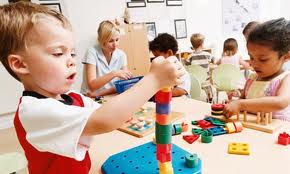Letter Knowledge

Letter knowledge is understanding;
- That the same letter can look different, for example, a lower-case letter ‘b’ looks different from a capital letter ‘B’. Letters will also look different depending on which font type is being used or if it is handwritten, for example, an Arial font letter ‘g’ looks different from a Calibri font ‘g’.
- That letters have names and the same name is used for that letter even when they look different, so the lower-case letter ‘a’ and its capital letter form ‘A’ are both called ‘ay’.
- That letters (graphemes) are used to represent sounds (phonemes) in words. Teaching the unique letter names of the alphabet is an important pre-phonics skill. A letter or combination of letters can represent more than one sound and so the only way of identifying alphabet letters when we talk about them is to use their unique names.
Developing Letter Knowledge:
Through Play:
- Sorting and Matching Games – use plastic or wooden letters, alphabet letter flash cards; can they group all the lower-case letters together, or all the capital letters or all the different letter ‘ay’s’ together.
- Kim’s Games – use plastic or wooden letters, alphabet letter flash cards. Using a few letters at a time, place 5 to 10 on a tray and let your child look at them and talk through which letters are there. Cover with a tea towel and ask your child to look away, then remove 1 or 2 of the letters. Then ask your child to look back and remove the tea towel. Can they spot which letters are missing.
- Detective Games – focus on identifying individual letters of the alphabet and naming them, this can be played at home or when out and about.
- Leap Frog – use the letters of the alphabet on home-made paper lily pads. Use the letter names to identify the target lily pad for your child to either jump onto or to throw a bean bag/soft toy on to.
- Skittles and Throwing Games – use letters of the alphabet on the targets and use the letter names as a way of identifying which of the targets your child is aiming for.
Through Drawing/Writing:
- Making lists of things to do, or a shopping list. Their version of the list may be just squiggles and dots (so don’t rely on this for your shopping trip) but it is the beginning. I would keep the list and get them to tick off things done or items purchased as part of the experience so that it has a genuine purpose (children really like this).
- Making and drawing their own story book.
- Learning to write letters correctly (see our Teach handwriting Website: http://bit.ly/2F9P7cI)
Through Songs/Nursery Rhymes:
- Singing Alphabet Song, try singing it to different tunes.
- Make up Your Own Rap – point to the letters as the rap is said.
Through Talk:
- Talk about letters as being shapes made up of straight, curves and diagonal lines.
- Look at the letters in your child’s name, talk about the fact that the first letter in their name is always a capital letter and that normally the other letters are lower-case letters.
- Point out, especially for slightly older children, that lower-case letters are about half the size of the capital letters.
- Compare letters looking at what is the same and different about them.
- When taking about letters use the letter name as well as the sound it is making in the word, remember a letter is often used to represent more than one sound. The letter ‘a’ can be used to represent different sounds in the following words: ant, apron, was, and any (just 4 of the eight sounds it is used to represent).
Through Book Sharing:
What Books to choose?
- Books with shapes
- Books where you have to find things (like I spy)
- Alphabet books
- Books which use different font styles in the pictures and text.
Book Sharing Tips:
- Alphabet books do not need to be read from cover to cover. Let your child choose which letters they want to look at.
- Trace the letters with your finger or let your child trace it (make sure you trace the letter using the correct formation orientation, encourage your child to do the same).
- Talk about the pictures in alphabet books before focusing on the letter, its name and the sound it can make.
- Show your child the first letter in their name and then look for that letter in the book.
- Show and talk about how some letters are in their capital form and others in their lower-case form. Can they find other examples of the letters?
- Choose two letters to talk about: How do they look alike? How do they look different? What shapes/line styles are they made up of?


